RTK "Marker" turns into ZSU
The development of the experimental project of the Marker robotic complex continues. Due to various improvements in technology, computing tools and software, the complex receives additional capabilities and new functions. Recently it became known that after another such refinement, the Marker turned into a self-propelled air defense system of the near zone.
Latest tests
On February 12, RIA reported on the latest work within the framework of the Marker project. News with reference to the management of the enterprise-developer. Technical aspects, goals and results of recent events were revealed by Evgeny Dudorov, Executive Director of NPO Androidnaya Tekhnika.
In the course of recent tests, issues of countering unmanned aerial vehicles were worked out. "Marker" was planned to be turned into a light self-propelled air defense system capable of detecting and hitting complex targets, incl. group. "Roy" drones represent a particular danger, and therefore technologies for protection against them are needed.
The experimental anti-aircraft complex was made on the basis of one of the available Markers. He received new hardware and software to solve new problems. Test firing was carried out using sports equipment. The role of inconspicuous small-sized air targets was entrusted to skeet targets launched from the stand.
It is reported that the first stage of such tests ended with acceptable results. At the same time, the development of the project and its components will continue. Due to various changes, it will be possible to improve the overall characteristics of the complex.
Technical details
The anti-aircraft version of the "Marker" was built on the basis of the existing three-axle wheeled autonomous platform. Previously, this car was used in sea trials and demonstrated its autonomous driving capabilities on various tracks. It was also equipped with combat and other modules.
In the air defense version, a combat module with machine-gun and grenade launchers is mounted on the platform. A normal caliber machine gun is capable of effectively dealing with a wide range of ground and air targets. The drives of the machine-gun-grenade launcher provide rotation at a speed of up to 350 degrees / sec., which is enough to solve all the expected tasks. It is noted that no other combat module has such a rate of fire transfer.
The regular means of the module were supplemented with a small-sized radar station. Its antenna was placed on top of the module under a radio-transparent dome. The type and characteristics of the radar are not reported. At the same time, it is mentioned that it is capable of detecting targets with a low RCS and determining their coordinates with high accuracy.
The fire control system is built using neural networks. Such tools are used to analyze incoming data and recognize air targets. In the course of further development, it is planned to increase the efficiency of this part of the complex. The neural network in its final version should identify targets and direct weapon faster and better than a human operator.
As follows from the disclosed data, during the tests, the anti-aircraft "Marker" monitored the air situation using radar. Tracking of the detected target was carried out by automation with the help of optoelectronic means. After recognizing the object, machine gun fire was fired.
Standard target plates were used in the tests. This is a visually contrasting object with a diameter of 100 mm, flying at a speed of about 90 km/h. With certain reservations, such a target is capable of imitating a small-sized UAV. Reportedly, in the course of the tests, the Marker showed a probability of hitting a target of approx. 80%.
Performance Boost
Apparently, testing and testing of the anti-aircraft version of the Marker RTK will continue. Recent tests have shown that such a complex as a whole is capable of solving the tasks, but so far there are serious limitations. It is necessary to continue the development of the hardware and software, which will eventually bring the combat characteristics to the required level.
First of all, it is necessary to improve the reliability of the SLA. It is this component of the complex that is responsible for the search, detection and defeat of targets. All operations are carried out autonomously and without the participation of an operator, which places high demands on speed and efficiency. The fundamental possibility of solving the problem has already been shown, but further improvement of all systems is necessary.
The development of hardware and software should lead to the achievement of one hundred percent or close to it the probability of hitting targets. In addition, "Marker" must learn to fight not only with cymbals that have a predictable trajectory. It is necessary to provide escort and destruction of maneuvering UAVs.
The solution of all these problems will lead to the emergence of an extremely interesting and promising model of military equipment. Lightweight and compact robotic ZSU with maximum automation of work will definitely find a place in air defense systems. Such a complex will be able to effectively solve typical modern problems, independently or in groups.
New Features
It should be recalled that the Marker project is experimental and experimental in nature. Its main goal is the creation and development of promising technologies in the field of military robotic systems. As part of this work, Androidnaya Tekhnika created and tested several variants of autonomous platforms on caterpillar and wheeled chassis, suitable for installing various payloads.
Earlier, within the framework of the Marker project, issues of autonomous traffic control were worked out. Computer systems and software have been created that can independently drive a car along a given route, taking into account the terrain and obstacles. The RTK was also tested in a combat configuration. With the help of optics on the combat module, such a complex observed the terrain, searched for and accompanied targets. However, the decision to open fire remained with the operator.
After field tests, experiments were carried out under conditions close to real operation. So, "Markers" were used in the protection of the Vostochny cosmodrome and carried out patrols. Offline, they moved along the protected lines and searched for violators.
As it has now become known, Android Technology is working on another feature for the experienced Marker. The complex masters the observation of the air situation and the fight against flying targets. Some success has already been shown, and further growth in performance and capabilities should be expected in the future.
Reserve for the future
Thus, the Marker project continues to develop and again becomes a platform for the creation and testing of promising technologies. Based on the results of ongoing work, in the foreseeable future, the list of such developments and solutions will increase again. It will include new technologies in the field of detection, control and weapons systems suitable for use in air defense, incl. when solving complex problems.
It is known that the Marker complexes in their existing configurations will remain experimental platforms for exploring new ideas and testing components. At the same time, the Android Technology project will lead to the emergence of a wide range of developments of various kinds, suitable for use in real projects.
It should be expected that in the near or medium term, the developments on the "Marker" will form the basis of new types of military RTK, suitable for real operation. From the latest news, it follows that among such complexes there may be an automated self-propelled anti-aircraft gun with special functions.
How soon the current work on the "Marker" will be completed, and the automation will learn how to reliably hit complex targets in the form of UAVs, is unknown. The timing of the appearance of a real combat RTK with new features is also in question. However, the prospects of the project are already clear. Developments on the "Marker" - both in the field of air defense and in other areas - will certainly find application in the future and will affect the development of the army.
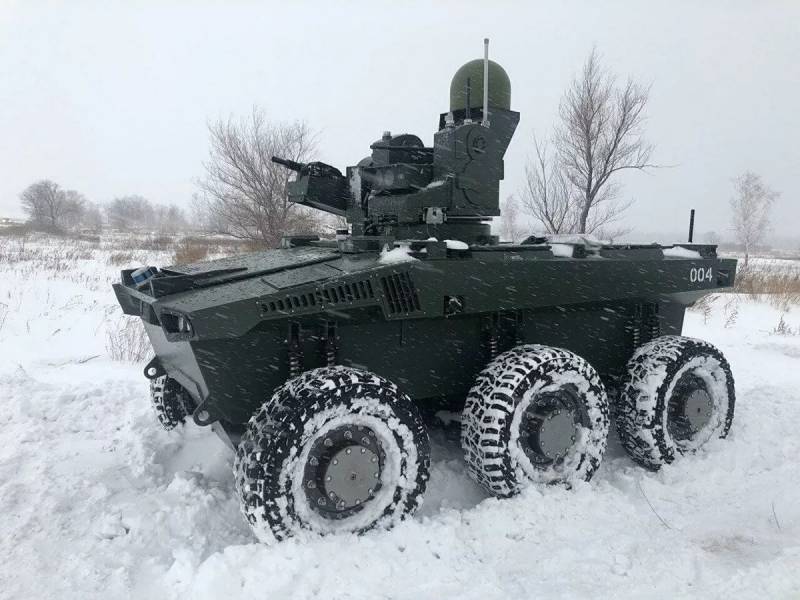
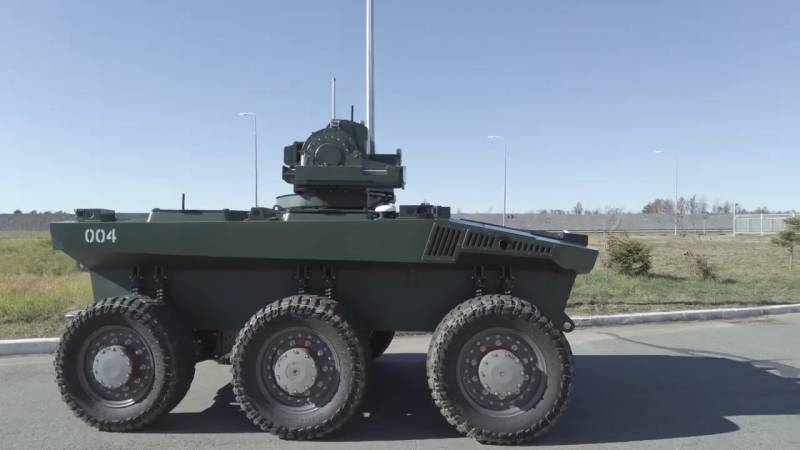
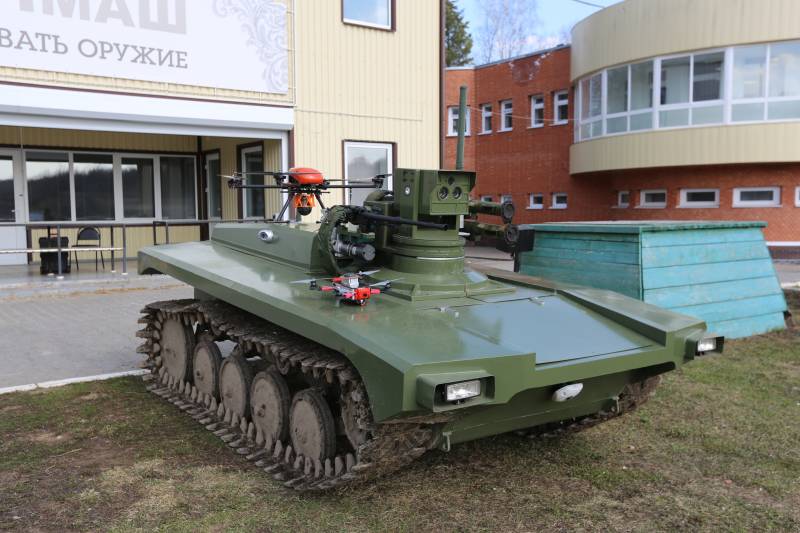
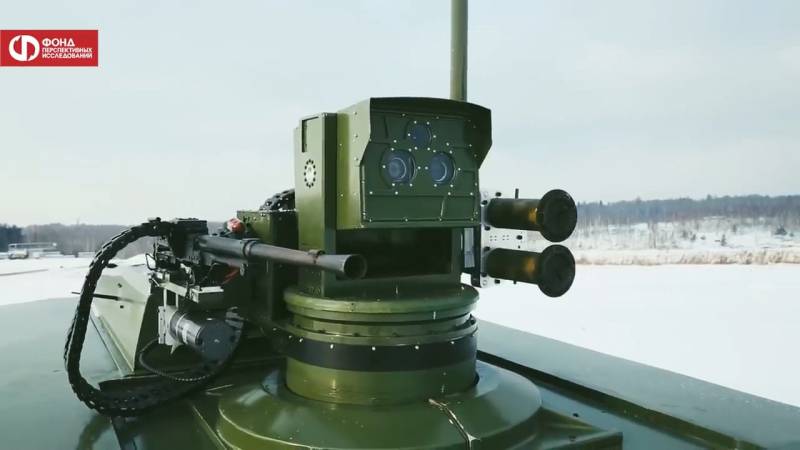
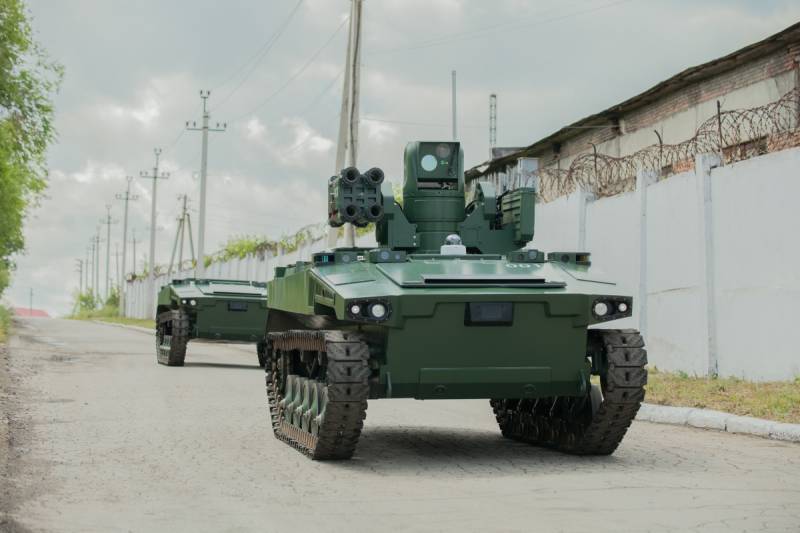
Information